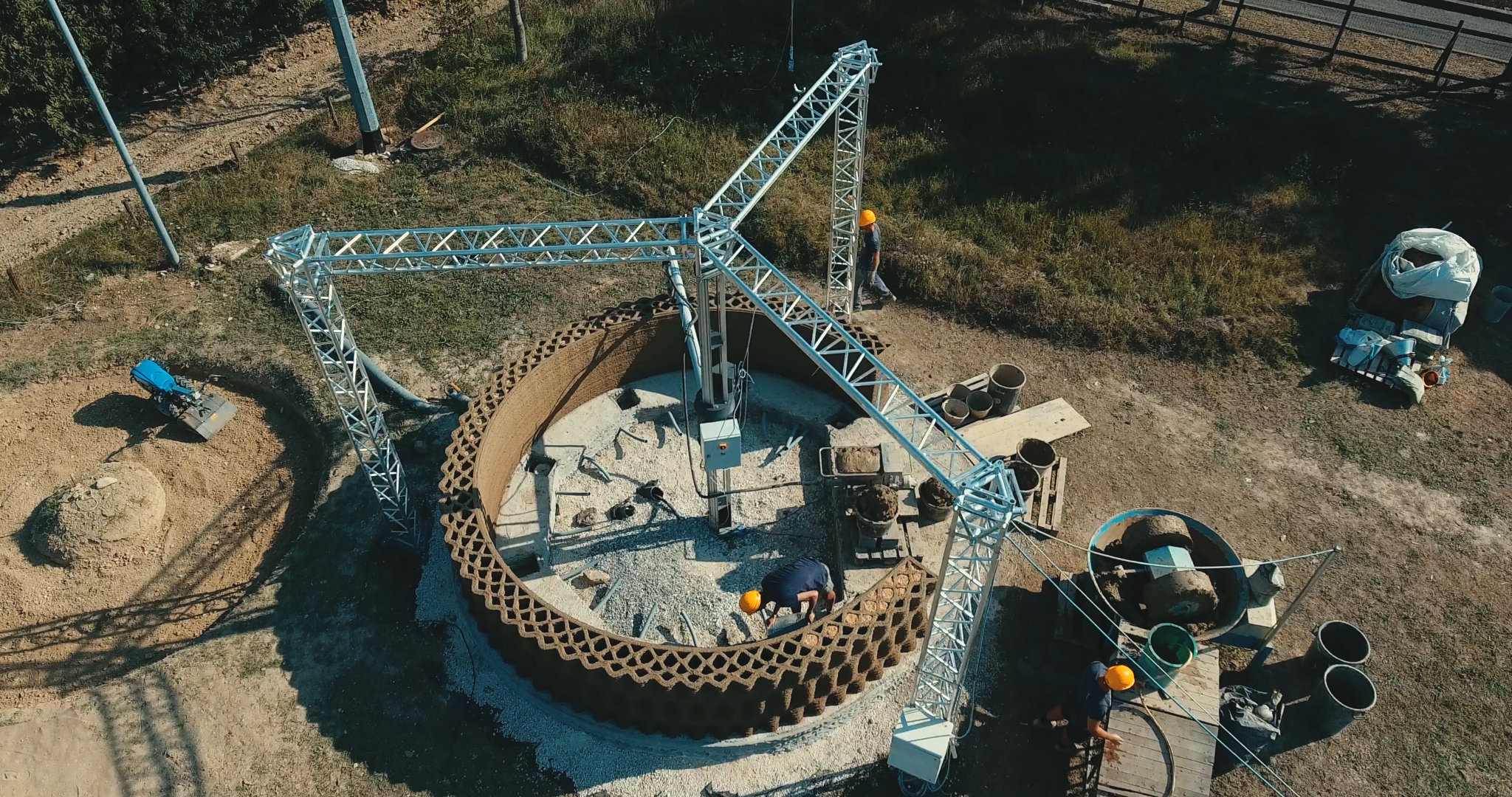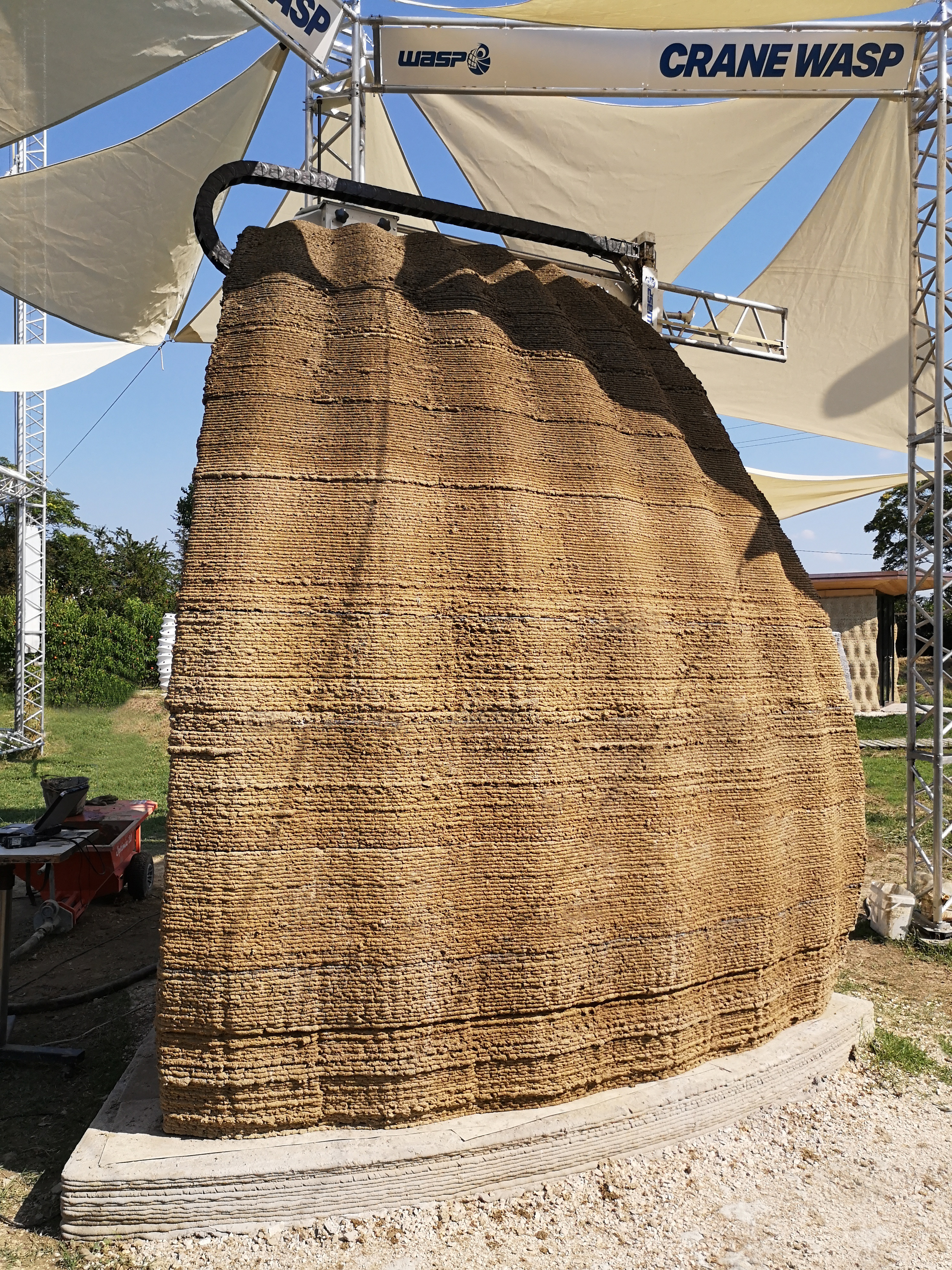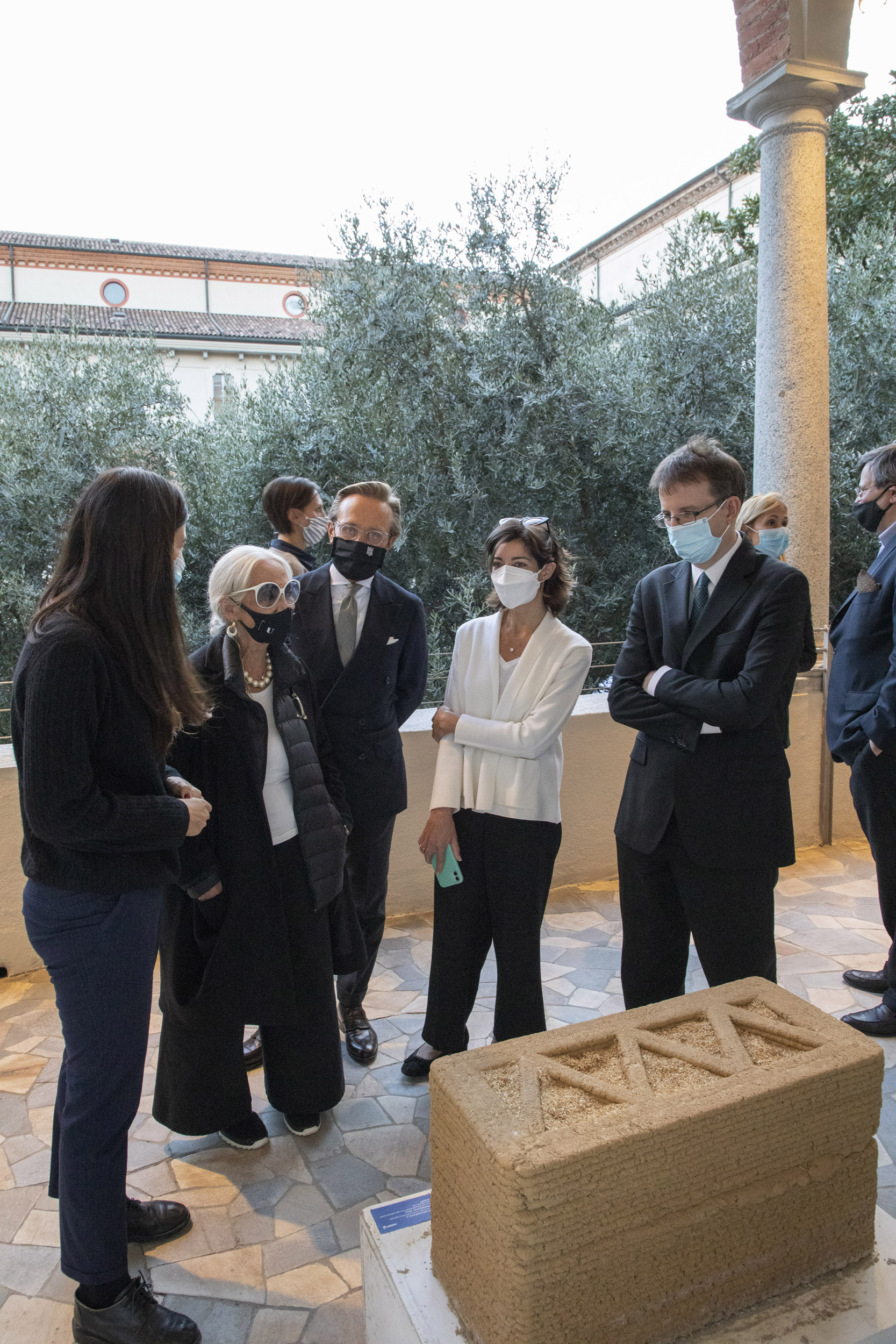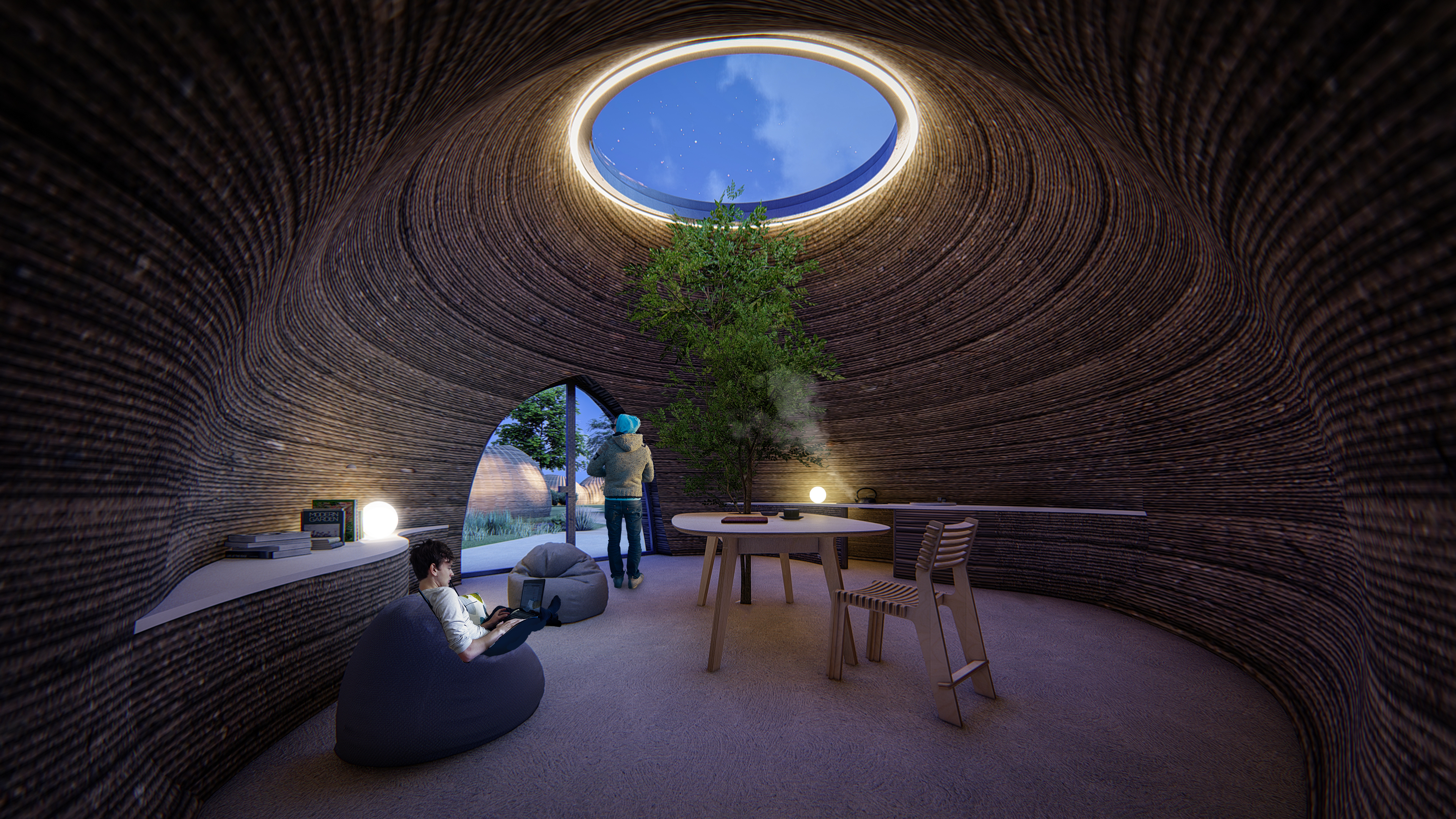Italian 3D printer manufacturer WASP has partnered with the Rossana Orlandi gallery in Milan to showcase the Gaia, a 3D printed eco-house created with sustainable natural materials.
The showcase is currently underway as part of the “We Are Nature” event at the Leonardo da Vinci National Museum of Science and Technology. During the exhibition, WASP will discuss the research behind the construction of Gaia which was first unveiled in 2018.
“When information is transferred into the most humble raw material ‘earth’, the resulting object changes its value, earth becomes home,” said Massimo Moretti, CEO of WASP. “Within 50 years we will need houses for another three billion human beings; WASP is depositing thoughts to shape those houses in respect of nature.”

Building Gaia
Gaia was created using the firm’s CRANE WASP 3D printer, using raw soil as the main binder of the printable material. Natural waste materials such as vegetable fibers derived from the rice production chain were also used in the mixture, which was compiled of 25% local soil, 40% straw chopped rice, 25% rice husk, and 10% hydraulic lime, made workable through the use of a wet pan mill.
Gaia has been designed with integrated natural ventilation systems and thermo-acoustic insulation systems. The 3D printed casing took 10 days to print, culminating in 20 square meters of wall with a thickness of 40cm.
WASP says the bio-building has minimal environmental impact and has the potential to be hugely scalable.

“We Are Nature”
The Rossana Orlandi gallery requested WASP’s research to be part of its showcase for the “We Are Nature” exhibition. Both parties have a shared wish to support environmental awareness and advocate for new forms of sustainable living which could help reduce plastic waste and CO2 emissions within the construction sector.
During the event, WASP will talk through its research process for the construction of Gaia and how the building was constructed through bioclimatic, eco-friendly processes, and wholly sustainable materials. “We Are Nature” is taking place until October 10, 2020.

WASP’s 3D printed eco-house credentials
Founded in 2012, WASP was established with the aim of developing viable construction processes based on the principles of the circular economy. The company believes 3D printed, ‘zero-mile’ homes, using materials found in the surrounding area, could be key to solving the global population crisis.
In 2015, the firm developed its BigDelta WASP; a 12m-high 3D printer for building homes, capable of extruding both concrete and raw materials, such as straw and terrain. The machine was used to create WASP’s Shamballa project – an eco-friendly technological village in Italy built using resourceful additive manufacturing.
In addition to creating Gaia, WASP has also partnered with Bologna-based Mario Cucinella Architects (MCA) to 3D print a model for a sustainable global habitat, named TECLA. Also constructed using the WASP CRANE 3D printer, TECLA is based on a circular manufacturing process utilizing reusable, recyclable materials taken from the local terrain, and is due to be launched at the end of 2020.

Nominations for the 2020 3D Printing Industry Awards are still open, let us know who is leading the industry now.
The fourth edition of the 3D Printing Industry Awards Trophy Design Competition is now underway. Enter your design for the chance to win a CraftBot Flow 3D printer.
To stay up to date with the latest 3D printing news, don’t forget to subscribe to the 3D Printing Industry newsletter or follow us on Twitter or liking our page on Facebook.
Are you looking for a job in the additive manufacturing industry? Visit 3D Printing Jobs for a selection of roles in the industry.
Featured image shows the Gaia eco-house 3D printed using the WASP CRANE. Image via WASP.



